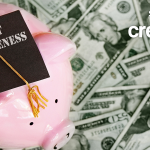When Usher isn’t on stage belting ballads and putting on a show, he’s doing all that he can to support his family’s health, especially his child who has Type 1 diabetes.
“My child was diagnosed at six [years old],” says the mega-star, who recently partnered with Beyond Type 1, an advocacy group for diabetes awareness.
“Lack of information can be overwhelming. Had I known a year, a month, a day, before [my child was diagnosed], I probably would have been better [off].”
Type 1 diabetes is traditionally seen as “the youth version of diabetes,” says Kristian Hurley, senior vice president of programs, advocacy, & health equity at Beyond Type 1. But adults have been diagnosed with the condition more frequently in recent years, Hurley adds.
97% of caregivers agree with Raymond that knowing about their loved one’s risk of Type 1 diabetes sooner would have benefited them, according to a recent poll of 1,000 caregivers for people with the condition, done by Beyond Type 1 and Sanofi.
The extra time may have given them a chance to learn more about the condition and find the right doctor for their loved one, they say.
“For me, it was a bit by trial and error but I had to go through the process,” to learn more about the condition, Usher Raymond IV, more commonly known as Usher, tells CNBC Make It.
“[I’m] hoping to make that information available to those who could really benefit from it.”
A huge aspect that caregivers of people with Type 1 diabetes, and those living with the condition, aren’t aware of, until it’s too late, is how expensive it can be to manage the condition.
88% of adults with Type 1 diabetes needed emergency care to treat symptoms before and after their diagnosis, an additional survey conducted by Beyond Type 1 shows. Half of the adults polled say they spent at least $5,000 on emergency care.
Similarly, 44% of caregivers for people living with Type 1 diabetes say they spent at least $10,000 for their loved one’s emergency care visits.
“That’s a big challenge that really struck my heart because so many Americans don’t have $1,000 in savings,” Hurley says.
“Now you’re faced with this large debt, and you’re maybe forced to take out credit. It creates a real problem and can very easily put families into financial distress.”
This is why Hurley encourages people to know the signs of diabetes, including:
- Frequent urination
- Constant feelings of exhaustion
- Weight loss
- Excessive thirst
“But we don’t want them to wait for those signs,” Hurley says.
“We want them to know their risk, assess their risk, and get out in front of it and have the opportunity to seek screening so that you can have a softer landing. You don’t have to get diagnosed in the emergency room in crisis.”
Want to be a successful, confident communicator? Take CNBC’s new online course Become an Effective Communicator: Master Public Speaking. We’ll teach you how to speak clearly and confidently, calm your nerves, what to say and not say, and body language techniques to make a great first impression. Sign up today and use code EARLYBIRD for an introductory discount of 30% off through July 10, 2024.
Plus, sign up for CNBC Make It’s newsletter to get tips and tricks for success at work, with money and in life.
Read the full article here




